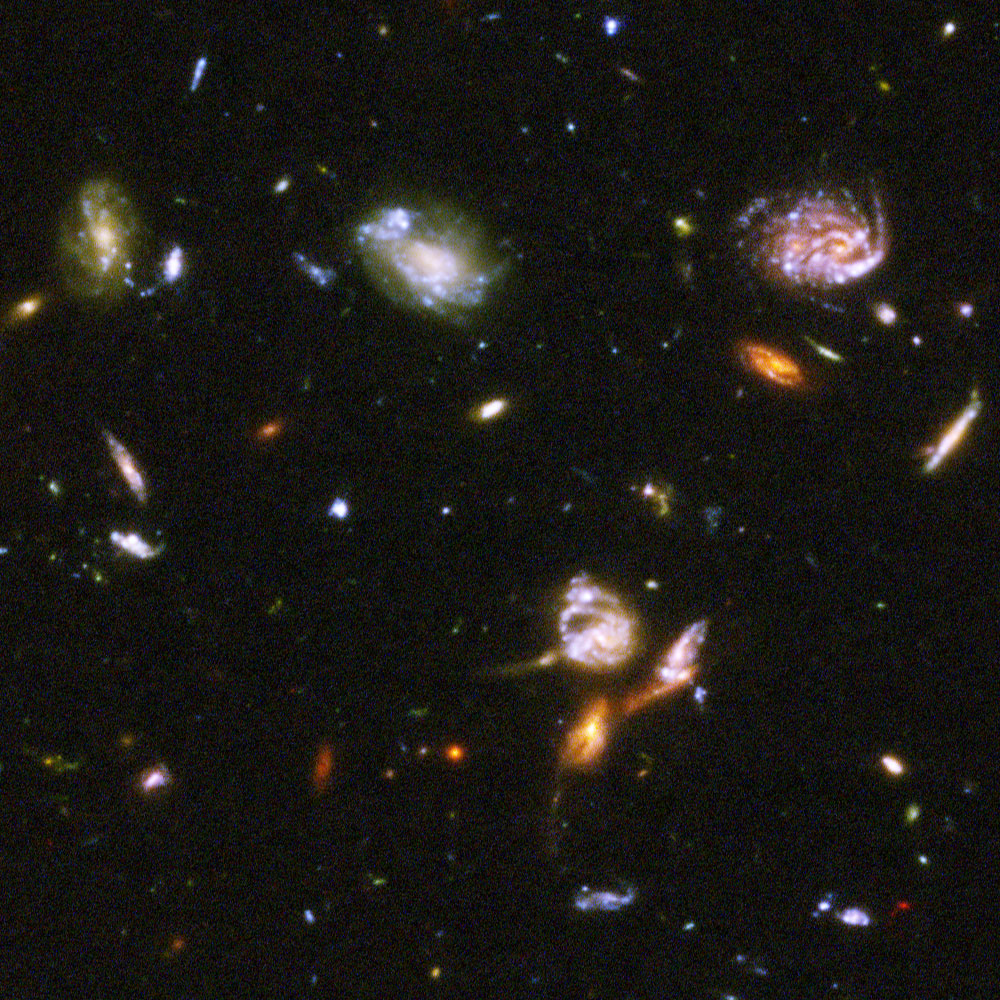Sonido en el espacio exterior / Sound in outer space
Sonido en el espacio exterior
Sound in outer space
Sound in outer space
- Al contrario de la creencia popular de que no hay sonido en el espacio, este sí existe
- Contrary to the popular belief that there is no sound in space, it exists
Lloyd y Mitchinson explican en su libro El nuevo pequeño gran libro de la ignorancia (2012), que incluso al estar cerca de una nube de gas interestelar, los átomos que llegarían a nuestros tímpanos serían tan pocos, no podríamos escuchar nada. También recalcan que tal vez algún micrófono ultrasensible podría llegar a ser capaz de captar estas vibraciones, pero el oído humano es realmente sordo frente a este fenómeno.
Como estos sonidos no los captamos, esto quiere decir que están por debajo de los 20 Hz, a estos sonidos no captados por nosotros son los que llamamos infrasonido. Como curiosidad la nota mas profunda jamás detectada está en si bemol y la genera un agujero negro. Es 57 octavas más grave que un do medio: más de mil millones de veces más grave que los límites del oído humano.
Part of the Hubble Ultra Deep Field. Even the brightest galaxies in this image have an apparent magnitude of 22. http://hubblesite.org/newscenter/archive/releases/2004/07/image/d/ Centered on UDF 8026
Contrary to the popular belief that there is no sound in space, it exists (Parra, 2012), it is not audible, but there are infrasound waves since space is not totally empty. There are different types of gases, much less dense than the terrestrial atmosphere and allow the propagation of sound, in outer space we would hardly find two atoms per cubic centimeter.
Lloyd and Mitchinson explain in The Second Book General of Ignorance (2012), that even being close to a cloud of interstellar gas, the atoms that would reach our eardrums would be so few, we could not hear anything. They also emphasize that perhaps some ultrasensitive microphone could become capable of capturing these vibrations, but the human ear is really deaf to this phenomenon.
As these sounds do not capture, this means that they are below 20 Hz, these sounds not captured by us are what we call infrasound. As a curiosity, the deepest note ever detected is in B flat and generated by a black hole. It is 57 octaves more serious than a half do: more than a billion times more serious than the limits of the human ear.
Referencias / References:
Lloyd, J. y Mitchinson, J. (2012). The Second Book General of Ignorance [El nuevo pequeño gran libro de la ignorancia]. Barcelona: Paidos.
Lloyd and Mitchinson explain in The Second Book General of Ignorance (2012), that even being close to a cloud of interstellar gas, the atoms that would reach our eardrums would be so few, we could not hear anything. They also emphasize that perhaps some ultrasensitive microphone could become capable of capturing these vibrations, but the human ear is really deaf to this phenomenon.
As these sounds do not capture, this means that they are below 20 Hz, these sounds not captured by us are what we call infrasound. As a curiosity, the deepest note ever detected is in B flat and generated by a black hole. It is 57 octaves more serious than a half do: more than a billion times more serious than the limits of the human ear.
Lloyd, J. y Mitchinson, J. (2012). The Second Book General of Ignorance [El nuevo pequeño gran libro de la ignorancia]. Barcelona: Paidos.
Parra, S. (2012). "En realidad, en el espacio sí que puede oírse algo. ¿Cuál es la nota más profunda detectada en el universo?". En Xataka Ciencia. Recuperado de https://www.xatakaciencia.com/astronomia/en-realidad-en-el-espacio-si-que-puede-oirse-algo-cual-es-la-nota-mas-profunda-detectada-en-el-universo
Cómo citar este artículo:
Nocetti, F.A. (2014). "Sonido en el espacio exterior". En NabbuBlog. Recuperado de http://nabbublog.blogspot.com/2014/08/sonido-en-el-espacio-exterior.html
How to cite this article:
Nocetti, F.A. (2014). "Sound in outer space". In NabbuBlog. Retrieved from http://nabbublog.blogspot.com/2014/08/sonido-en-el-espacio-exterior.html


